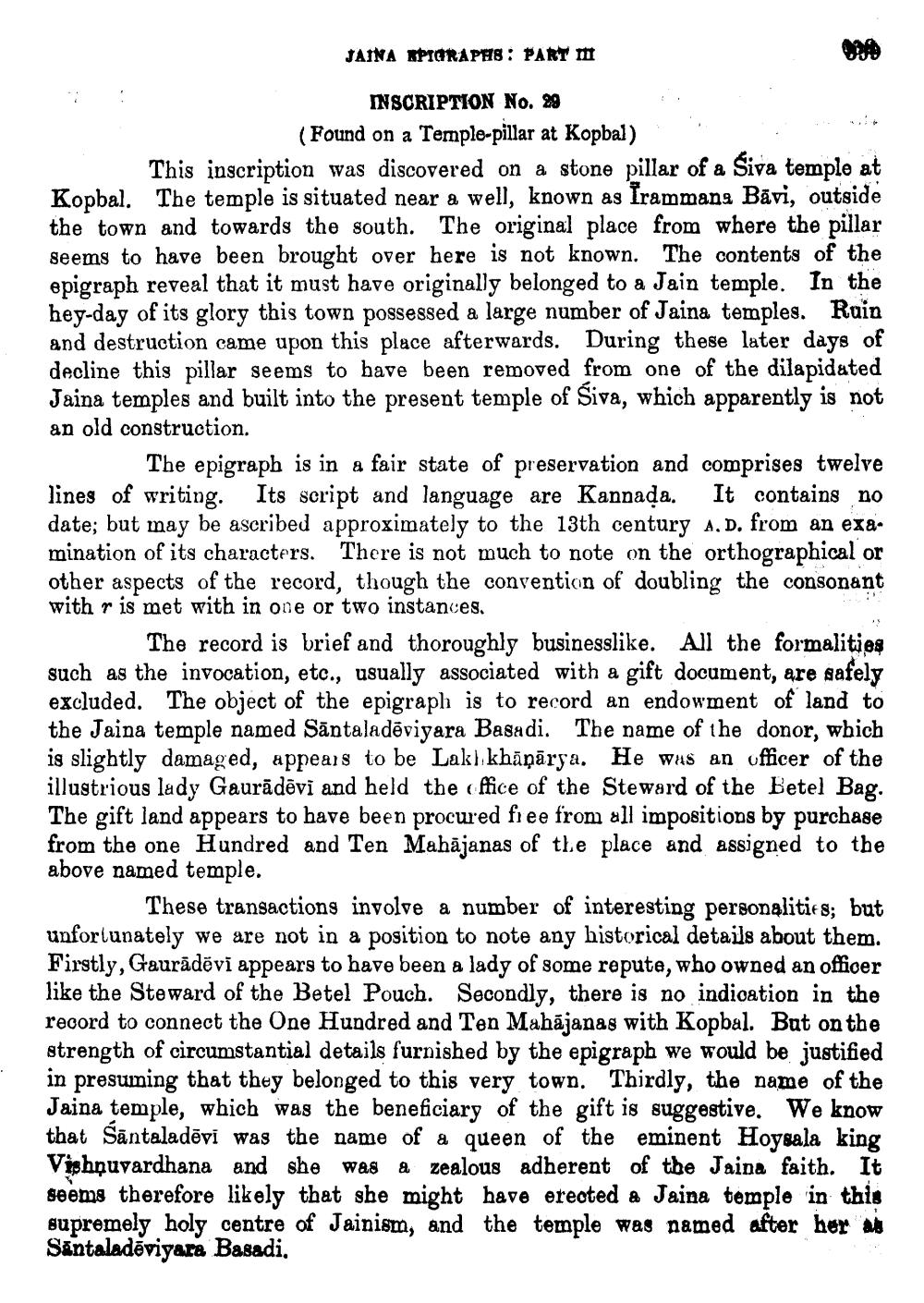________________
JAINA EPIGRAPHS: PART III
INSCRIPTION No. 29
(Found on a Temple-pillar at Kopbal)
This inscription was discovered on a stone pillar of a Siva temple at Kopbal. The temple is situated near a well, known as Irammana Bavi, outside the town and towards the south. The original place from where the pillar seems to have been brought over here is not known. The contents of the epigraph reveal that it must have originally belonged to a Jain temple. In the hey-day of its glory this town possessed a large number of Jaina temples. Ruin and destruction came upon this place afterwards. During these later days of decline this pillar seems to have been removed from one of the dilapidated Jaina temples and built into the present temple of Śiva, which apparently is not
an old construction.
The epigraph is in a fair state of preservation and comprises twelve lines of writing. Its script and language are Kannada. It contains no date; but may be ascribed approximately to the 13th century A.D. from an exa mination of its characters. There is not much to note on the orthographical or other aspects of the record, though the convention of doubling the consonant with r is met with in one or two instances.
The record is brief and thoroughly businesslike. All the formalities such as the invocation, etc., usually associated with a gift document, are safely excluded. The object of the epigraph is to record an endowment of land to the Jaina temple named Santaladeviyara Basadi. The name of the donor, which is slightly damaged, appears to be Lakh khaṇārya. He was an officer of the illustrious lady Gaurādēvi and held the office of the Steward of the Betel Bag. The gift land appears to have been procured fiee from all impositions by purchase from the one Hundred and Ten Mahajanas of the place and assigned to the above named temple.
These transactions involve a number of interesting personalities; but unfortunately we are not in a position to note any historical details about them. Firstly, Gauradevi appears to have been a lady of some repute, who owned an officer like the Steward of the Betel Pouch. Secondly, there is no indication in the record to connect the One Hundred and Ten Mahajanas with Kopbal. But on the strength of circumstantial details furnished by the epigraph we would be justified in presuming that they belonged to this very town. Thirdly, the name of the Jaina temple, which was the beneficiary of the gift: suggestive. We know that Santaladevi was the name of a queen of the eminent Hoysala king Vishnuvardhana and she was a zealous adherent of the Jaina faith. It seems therefore likely that she might have erected a Jaina temple in this supremely holy centre of Jainism, and the temple was named after her as Santaladeviyara Basadi,




